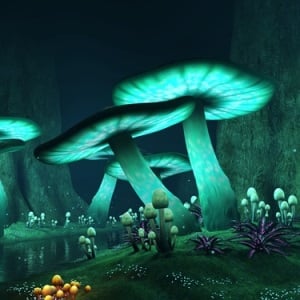
If you think you see a glowing mushroom, you might not be having a psychedelic hallucination. Some mushrooms indeed are bioluminescent, including one that sprouts among decaying leaves at the base of young palm trees in Brazilian coconut forests.
'Why do fungi make light?'
Scientists have long wondered what possible reason there could be for a fungus to glow. They now have an answer.
According to researchers experiments in Brazil involving the big, yellow mushroom called "flor de coco" (Agaricus phosphorescens), meaning coconut flower, showed that its nighttime bioluminescence attracted insects and other creatures that could later spread its spores around the forest.
Read: SA's most lethal mushroom
"Our research provides an answer to the question, 'Why do fungi make light?' that was first asked, at least first asked in print, by Aristotle more than 2,000 years ago," said biochemist Cassius Stevani of Brazil's Instituto de Química-Universidade de São Paulo.
"The answer appears to be that fungi make light so they are noticed by insects who can help the fungus colonise new habitats."
Geneticist and molecular biologist Jay Dunlap of Dartmouth College's Geisel School of Medicine said bioluminescence had independently evolved many times in such diverse life forms as bacteria, fungi, insects and fish.
"Most of these make light in their own way, that is, with biochemistry that is unique to each organism," Dunlap said.
Of the 100,000 known fungus species, 71 are bioluminescent. The species in the study, published in the journal Current Biology, is one of the biggest and brightest of them.
Fungal spores
The researchers found a circadian clock regulates its bioluminescence, glowing only at nighttime.
They created two sets of plastic mushroom replicas, one with LED lights replicating bioluminescence and a second set with no light. Suspecting the glow might be used to entice insects, they put glue on both sets of phony mushrooms in forest locations where real ones grow, then tracked the beasties that got stuck.
The glowing replicas lured an array of ants, cockroaches, flies, beetles, spiders, harvestmen, slugs, snails and centipedes.
Such creatures, after crawling on a real bioluminescent mushroom, disperse fungal spores around the forest.
Dunlap speculated that many of Earth's bioluminescent mushrooms likely developed their glow for that purpose.
Read: Mushrooms a hot favourite
"Because it has evolved so many times in so many different organisms, each with their own biology, studying bioluminescence gives one a window on living things in all their wonderful diversity, and it sends you off to questions that you did not know existed," Dunlap said.
Read more:
'Magic mushroom' may be beneficial
Image: Glowing mushrooms from Shutterstock




 Publications
Publications
 Partners
Partners










